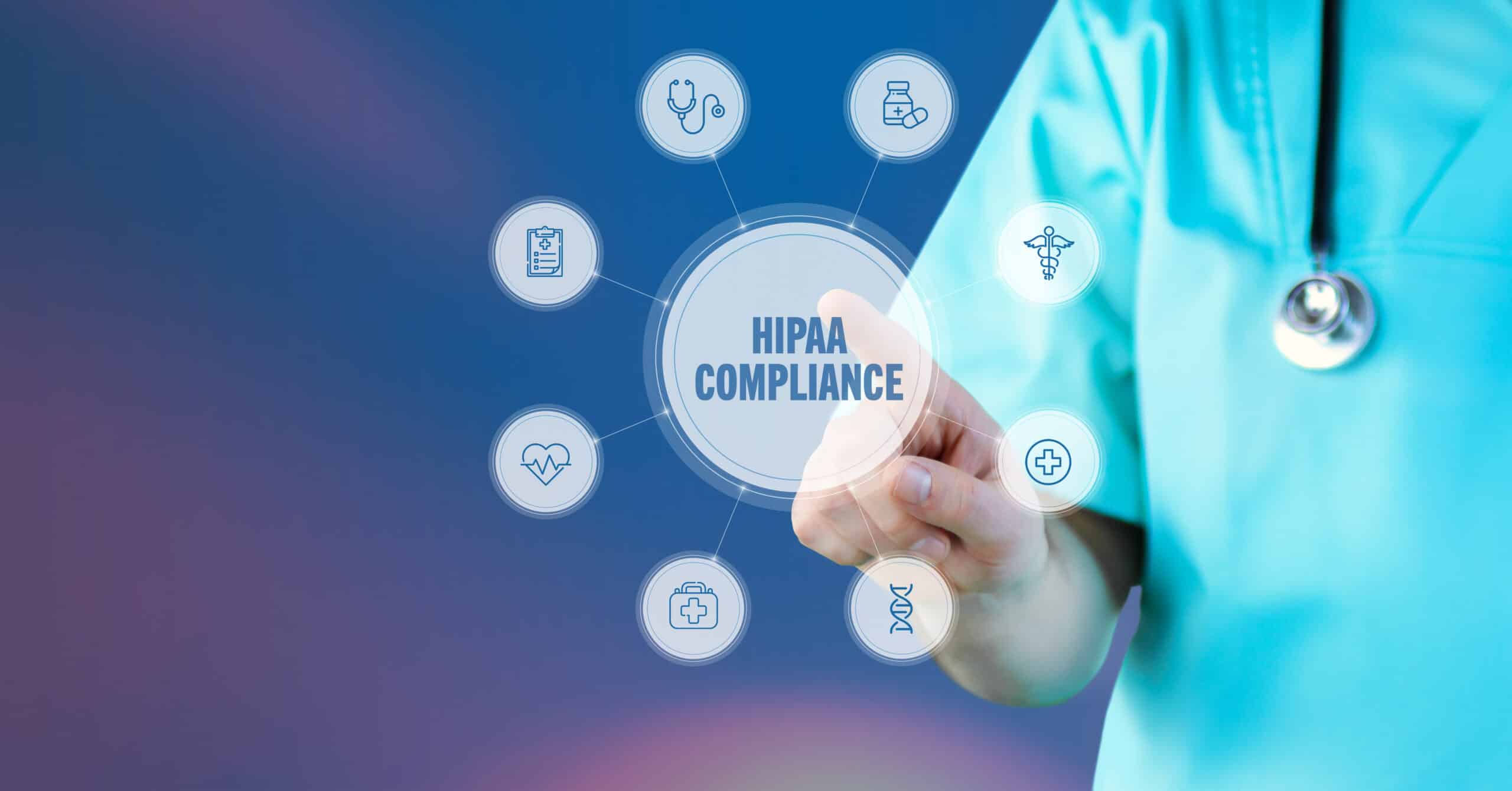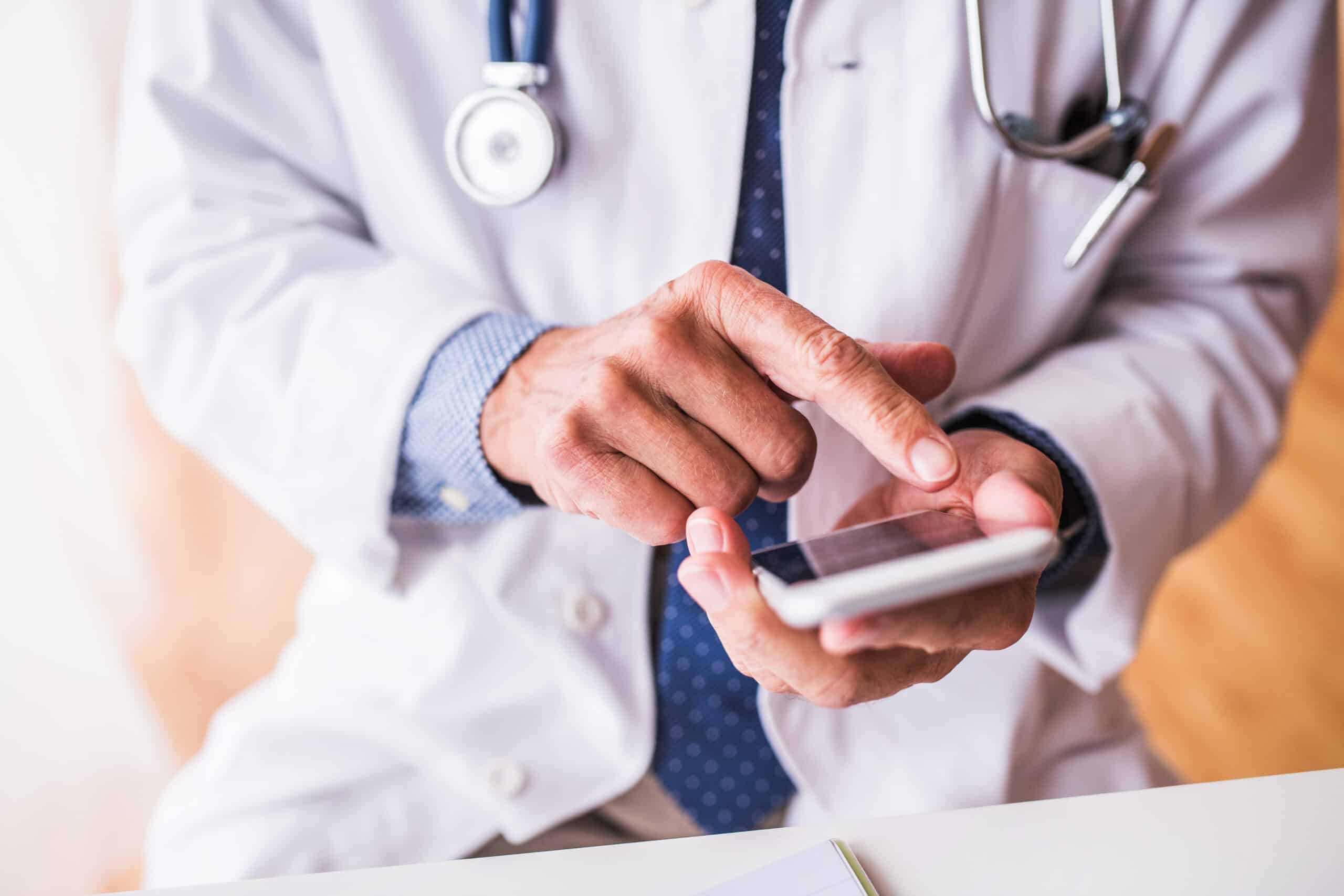Technology has become an integral part of communication in today’s healthcare industry. From automated scheduling to telehealth appointments, advances in technology have increased efficiency and accessibility for both medical professionals and their patients. But new methods of communication introduce new risks when it comes to protecting patient information. Regular text messaging may seem convenient, but it’s not secure and does not comply with the Health Insurance Portability and Accountability Act (HIPAA) regulations. HIPAA-compliant texting is essential, and healthcare organizations and providers need to implement it properly.

What is HIPAA-Compliant Texting?
HIPAA-compliant texting refers to using secure SMS messaging that meets HIPAA’s privacy and security requirements. HIPAA establishes national standards for protected health information (PHI) and requires healthcare organizations to implement administrative and technical safeguards. HIPAA-compliant text messaging helps providers communicate PHI electronically while ensuring confidentiality, integrity, and availability.
HIPAA-compliant messaging platforms use safe messaging protocols and encryption to protect PHI during transmission and storage, and offer authentication and access controls to confirm only authorized individuals can access and use PHI. For instance, users can provide a unique username and password, two-factor authentication, or biometric verification before accessing PHI.
One of the main benefits of HIPAA-compliant messaging is it enables healthcare providers to communicate more efficiently and effectively with patients. It’s an ideal way to securely share patient information, coordinate care, send reminders, and speak about urgent or time-sensitive issues. With secure messaging platforms, healthcare providers can also send images, videos, and audio files, which can help diagnose and treat patients remotely.
To comply with HIPAA, healthcare organizations must implement policies and procedures for using texting platforms and ensure their employees know these guidelines. Providers must avoid sending PHI to unauthorized individuals, circumvent public Wi-Fi networks, and report any breaches or suspected breaches immediately. Remaining HIPAA compliant also requires audit logs of all electronic patient communication containing PHI to track and monitor access and use.

Why is HIPAA-Compliant Texting Essential?
Protecting Patient Privacy
HIPAA-compliant text messaging ensures sensitive patient information remains confidential and is not accessible to unauthorized individuals. HIPAA regulations protect patient confidentiality, and violating these regulations can result in legal consequences, damage to the organization’s reputation, and loss of patient trust.
Enhancing Communication Efficiency
HIPAA-compliant messaging apps enable healthcare professionals to communicate with each other more efficiently. They eliminate the need for phone calls and voicemails, which can be time-consuming and less effective. With HIPAA-compliant texting, healthcare professionals can quickly exchange critical patient information and collaborate on care plans.
Improving Patient Care
Secure messaging apps help healthcare professionals provide better patient care by allowing access to critical patient information quickly. This makes it easier to share test results, answer patient questions, and provide a better overall patient experience.
Reducing Errors
HIPAA-compliant texting solutions reduce the likelihood of errors due to miscommunication or delayed access to critical patient data. The result is an improvement in the quality of patient care and can lead to better health outcomes.
Increasing Patient Engagement
Patient engagement improves when healthcare providers communicate openly in ways patients can understand. Secure SMS messaging allows patients to receive lab results and other essential information directly on their mobile devices, making it easier to manage their health and stay informed.
Improving Revenue
Asynchronous telehealth is now covered by Medicare and Medicaid in many states. This includes patient/provider communications which occur via secure messaging, among other “stored and forwarded” interactions. Providers can communicate more efficiently with their patients while still being reimbursed for their time.
Ensuring Regulatory Compliance
HIPAA compliant texting provides audit trails, message encryption, and remote wipe capabilities, which help healthcare organizations maintain patient confidentiality and meet HIPAA regulations. Non-compliance can result in substantial fines and penalties and damage a provider’s standing.
Adapting to Changing Technologies
As technology evolves, healthcare organizations need to adapt to new innovations. HIPAA-compliant texting solutions are one such innovative technology, enabling medical professionals to communicate quickly and securely while ensuring patient information is protected.
What’s PHI and Why Can’t it Be Sent Via Text?
Protected health information (PHI) refers to any information somebody can use to identify a patient related to their health status, healthcare services provided, or payments for those services. PHI includes personal identifiers such as name, address, birth date, and social security number, as well as medical information like diagnoses, treatment plans, and medical history. HIPAA regulations protect PHI, and healthcare organizations must ensure it is always safe and confidential.
One of the primary reasons someone cannot send PHI in a regular text message is PHI needs to be protected, per HIPAA regulations, and standard text messages are not encrypted. This gives anyone who intercepts a standard SMS message access to its contents, putting sensitive patient data at risk of being stolen or misused. Healthcare providers must ensure patient communications containing PHI is encrypted to defend patient privacy.
Privacy Requirements for PHI
HIPAA regulations require PHI be stored, transmitted, and handled securely. HIPAA-compliant texting solutions use encryption and other security measures to keep PHI impregnably shared so healthcare providers can communicate with each other and patients without risking sensitive information.
Appointment reminders, prescription-ready notifications, review requests, and other messages not containing PHI can come from regular text messaging apps. However, if even the smallest amount of PHI is involved, the text message must go through a HIPAA-compliant solution to avoid endangering the patient’s confidentiality.
HIPAA regulations also require healthcare providers to obtain patient consent before sharing any PHI. Patients have the right to know who uses or shares their PHI and how. HIPAA-compliant texting apps provide an audit trail, which can help healthcare providers demonstrate they have obtained patient consent before sharing PHI.

How to Implement HIPAA-Compliant Texting
Step 1: Conduct a Risk Analysis
Before implementing a HIPAA-compliant texting solution, organizations need to identify potential threats and vulnerabilities. This process should include a comprehensive review of the organization’s policies, procedures, and technical safeguards to ensure compliance with HIPAA regulations.
Step 2: Choose a HIPAA-Compliant Texting Application
Find a HIPAA-compliant texting app with proper regulations, including encryption, access controls, and protected storage.
Step 3: Train Your Staff
Healthcare professionals need training on adequately using the new HIPAA-compliant texting application. Training should include sending and receiving secure messages, reporting incidents, and responding to breaches.
Step 4: Develop Policies and Procedures
Organizations should develop policies around HIPAA-compliant texting, including message content guidelines, retention, and reporting security incidents.
Step 5: Implement Technical Safeguards
Healthcare organizations should implement technical safeguards to protect PHI when using HIPAA-compliant texting. These protections include encrypting messages, using shielded login credentials, and limiting access to authorized personnel.
Step 6: Conduct Audits
Run regular audits to ensure the HIPAA-compliant texting application and related policies and procedures are being followed. These audits will identify areas of non-compliance and provide opportunities for corrective action.
Step 7: Obtain Business Associate Agreements
Medical professionals should obtain business associate agreements (BAAs) from their HIPAA-compliant texting application provider. A BAA is a contract outlining the provider’s responsibilities in safeguarding PHI and complying with HIPAA regulations.
Step 8: Monitor and Update
Healthcare organizations should stay informed of any changes to HIPAA regulations, review and update policies and procedures, and assess the effectiveness of their security measures.

Finding a Healthcare Communication Platform
HIPAA-compliant texting is essential for healthcare organizations to ensure patient information is secure and complies with HIPAA regulations. Healthcare providers can use specific messaging platforms to communicate more efficiently, improve patient care, and reduce errors. HIPAA-compliant texting helps adapt to changing technologies by enabling providers to communicate quickly and securely.
Essential Functionalities to Look For in a HIPAA-Compliant Texting Provider:
- Secure encryption
- Mobile or desktop messaging capabilities
- Message receipts for delivery and reading
- Secure patient portal messaging
- User authentication
Without all the features of a HIPPA-compliant texting app, medical providers can receive severe consequences like hefty fines and legal action. Organizations and their business associates can face penalties of up to $1.5 million per year for non-compliance with HIPAA regulations.
HIPAA-compliant Communication Platform
Updox provides a comprehensive communication platform designed specifically for healthcare providers, offering a wide range of features, including secure messaging, online faxing, appointment scheduling, and video chat, all of which are HIPAA-compliant. One of the standout features of Updox is its HIPAA-compliant texting, which enables healthcare professionals to communicate quickly and efficiently while ensuring patient privacy.
HIPAA-compliant texting through Updox allows healthcare professionals to send and receive protected messages from their desktop or mobile device. These messages are encrypted and can only be accessed by authorized personnel, keeping sensitive patient information confidential. For example, patients must enter a code in order to review their secure messages.
In addition, Updox offers several other communication features. The platform’s online faxing enables users to send and receive faxes without needing a physical fax machine. The HIPAA-compliant video chat feature lets medical professionals conduct virtual consultations, providing a convenient and efficient way to deliver care. There’s also an appointment scheduling function within the Updox Patient Portal to streamline the process and reduce no-shows and cancellations.
If you are a healthcare provider looking for a comprehensive communication platform that is HIPAA-compliant, Updox is an excellent choice. Its secure messaging and other features like online faxing, video chat, and appointment scheduling make Updox an indispensable tool for any organization.
FAQs
What is HIPAA?
HIPAA stands for the Health Insurance Portability and Accountability Act. Federal law sets standards for protecting sensitive patient information in the healthcare industry. HIPAA was enacted in 1996 to protect patient’s privacy and keep their health information confidential and secure. The law applies to healthcare providers, health plans, and healthcare clearinghouses that transmit electronic health information.
What is PHI?
Protected health information (PHI) is any information used to identify a patient’s health status or healthcare services provided. PHI includes a patient’s name, address, date of birth, medical records, test results, and insurance information, among other identifying information. Healthcare providers and organizations must protect PHI under HIPAA regulations to safeguard patients’ privacy and prevent unauthorized access or disclosure.
What are the consequences of violating HIPAA regulations?
Violating HIPAA regulations can result in significant fines, legal action, damage to an organization’s reputation, and loss of patient trust. In some extreme cases, a medical license is revoked, resulting in the loss of ability to practice medicine, or criminal charges can be made, leading to imprisonment.
Can regular texting be HIPAA compliant?
Regular texting is not secure and may not comply with HIPAA regulations, as it does not provide encryption or safe storage of patient information. To be HIPAA compliant, healthcare providers must use protected messaging platforms that ensure the confidentiality and integrity of patient information, such as encrypted messaging apps, secure email, or safe messaging portals. Such tools can help ensure that sensitive patient information remains protected and safe.
What are some examples of HIPAA-compliant texting applications?
Several HIPAA-compliant texting applications are available, including Updox. Such applications provide secure messaging and comply with HIPAA regulations, making it easy to communicate safely with your patients.
How often should healthcare professionals be trained on HIPAA-compliant texting?
Healthcare professionals should be trained on HIPAA-compliant texting upon initial implementation and at least annually to ensure continued compliance and awareness of any updates or changes to policies and procedures. Regular training and education on HIPAA protocols and best practices for secure communication can help healthcare professionals stay informed and maintain compliance with data privacy laws.





